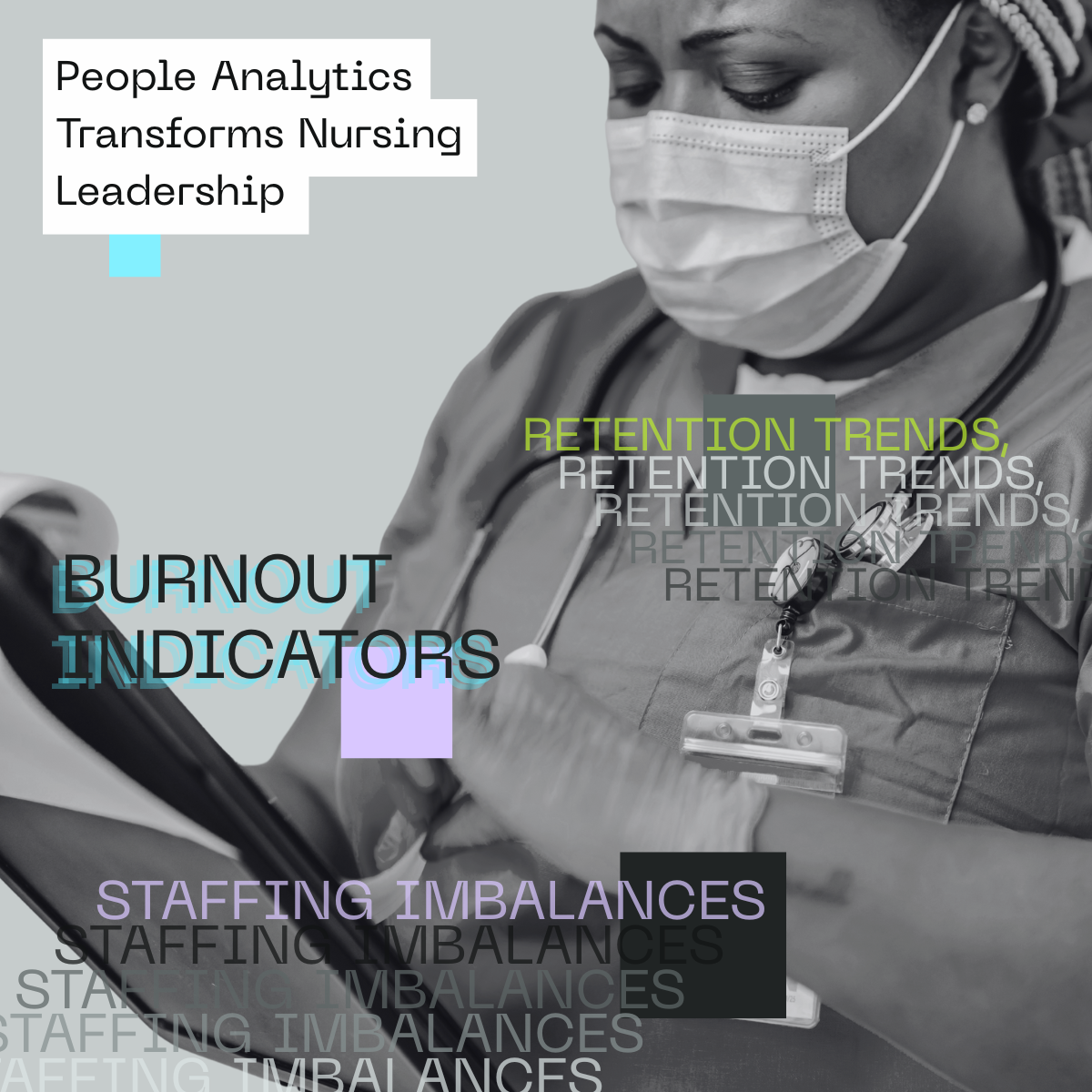Chief Nursing Officers (CNOs) face mounting pressure to combat nurse burnout, high attrition, and chronic staffing shortages, all while maintaining quality patient care. With an aging population, rising patient demands, and an ongoing nurse shortage, traditional workforce strategies are struggling to keep up. These persistent issues don't just strain financial resources; they jeopardize patient care and system-wide efficiency by creating a vicious cycle where staffing gaps fuel burnout, which drives turnover and further worsens shortages.
People Analytics provides a data-driven approach to understanding these interconnected workforce risks, forecasting needs, and identifying retention strategies before crises emerge. By analyzing nurse retention trends, burnout indicators, and staffing imbalances, CNOs can make informed, proactive decisions that support both their teams and patient care. With People Analytics, CNOs can strategically improve teams and operations.
Leveraging People Analytics for Smarter Nursing Leadership
For CNOs, People Analytics is a strategic asset. This innovative approach transforms traditional personnel management into a strategic advantage, driving higher engagement, lower turnover, and smarter cost management.
Chronic understaffing is a persistent issue in healthcare. The U.S. Bureau of Labor Statistics projects an average of 194,500 openings for RNs each year through 2033, yet the workforce is only expected to grow by 177,400 nurses over the entire decade from 2022 to 2032 (Source). This fundamental mismatch signals a long-term structural deficit. Long-range forecasts from the Health Resources and Services Administration (HRSA) anticipate a national RN shortage of 6%—equivalent to nearly 208,000 full-time nurses—persisting into 2037 (Source).
Reducing Nurse Turnover with Predictive Analytics
Nurse attrition disrupts patient care, morale, and budgets. The financial impact is not only significant but escalating rapidly. In 2024, the average cost to replace a single bedside Registered Nurse (RN) surged to $61,110. (Source). For an average hospital, this relentless churn translates into annual losses between $3.9 million and $5.8 million (Source).
The financial leverage of retention is immense: each percentage point change in RN turnover can either cost or save an average hospital approximately $289,000 per year (Source). With predictive analytics, CNOs can pinpoint high-risk employees before they leave. By integrating and analyzing data that already exists within the organization – such as HR records, scheduling patterns, and engagement survey results – leaders can identify the specific drivers of turnover (Source).
A compelling real-world example is the Medway NHS Foundation Trust in the U.K. Facing a 14% nurse turnover rate, the Trust used predictive analytics to analyze five years of historical employee data. By modeling factors like salary, employee age, and tenure at the organization, they were able to predict which nurses would leave with 95% accuracy. This allowed managers to move from broad, reactive programs to focused, proactive "stay interviews" and targeted interventions for individuals identified as a high flight risk (Source).
Using Data to Combat Nurse Burnout
Burnout is a patient safety risk. The National Academy of Medicine has long identified burnout as a "systems issue," and recent data shows the problem is worsening.11 A 2024 report found that approximately 60% of nurses report feeling burnt out, and 23% are actively considering leaving the profession altogether (Source).
The top factors driving this crisis are organizational. A 2024 survey identified the leading causes of poor mental health among nurses as dissatisfaction with salary policies (63%), a lack of responsive leadership (60%), and unmanageable workloads (54%) (Source).
The consequences are dire. Research indicates a direct link between nurse burnout and declines in patient safety, with burnout contributing to higher rates of medical errors, infections, and patient falls (Source). A March 2024 study confirmed this, finding that higher burnout levels were significantly correlated with increased reports of medication errors and patient misidentification (Source). This elevates burnout from an HR metric to a critical patient safety and quality-of-care imperative.
The Future of Nursing Leadership with One Model
In the high-stakes healthcare landscape, CNOs can’t afford to rely on intuition alone when managing workforce challenges. People Analytics provides the strategic intelligence needed to optimize staffing, reduce burnout, and improve patient outcomes. Data-driven nursing leadership is a necessity.
One Model helps CNOs bring these insights to life with advanced workforce analytics that provide predictive retention modeling. By leveraging One Model’s platform, healthcare leaders can make more informed, data-backed decisions that drive efficiency and improve patient care outcomes.
Ready to see how People Analytics can transform nursing leadership?


